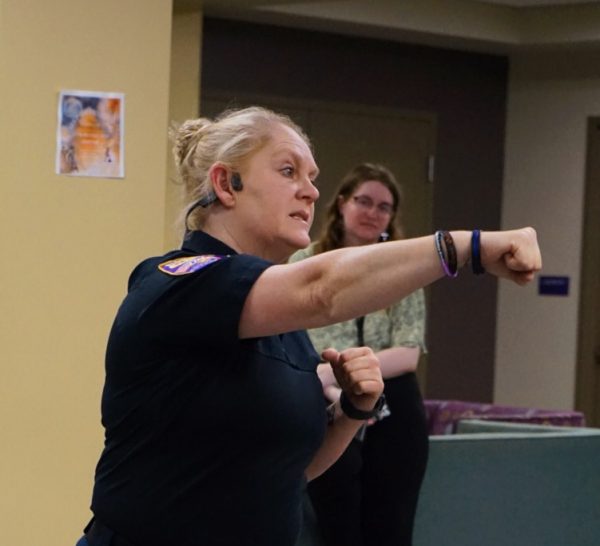UNA maintains high percentage of full-time faculty and small class sizes
September 25, 2015
While universities across the country are hiring more adjunct professors, UNA maintains a high percentage of full-time professors.
Adjunct or part-time professors are hired to teach one or two classes for a certain semester. They do not receive benefits or have the responsibilities of full-time professors, he said.
“It is essential to use adjuncts because of the decline in funding for universities,” said Associate Dean of the College of Arts and Sciences Christopher Maynard. “With economic and enrollment fluctuations, sometimes it is hard to know how many professors are needed to teach a certain class.”
He said wages for adjunct professors are close to minimum wage.
The cost to pay for full-time professors’ benefits and fixed costs to run a university continue to climb as well, making it more and more difficult to hire full-time professors, he said.
Over the past six years, the percentage of adjunct professors employed at UNA has decreased from 33 percent to 27 percent, according to a report from the Office of Institutional Research, Planning and Assessment. The national average percentage of adjuncts on college campuses was 41 percent in 2011, according to the U.S. Department of Education.
Universities around the country are hiring more adjunct professors than ever before. He said this trend has increased significantly across the nation in the past five years.
UNA tries to pay close attention to the number of adjunct professors on staff, he said.
Adjunct professors are not required to have a terminal degree — the highest degree available in that field — like full-time professors, according to the Southern Association of Colleges and Schools’ standards.
Most adjunct professors do not have the same amount of training as full-time professors because they have not completed the research required to earn a terminal degree, Maynard said.
“Having adjunct professors without this research background is a limitation because they often do not have the same knowledge about research trends as full-time faculty with terminal degrees do,” he said. “They don’t have the same skill set.”
However, he said UNA has many highly-qualified adjuncts who do have terminal degrees.
Freshman Kathleen Cater said she does not see a difference in professors with or without terminal degrees.
“It doesn’t matter to me as long as the professor is qualified to teach the class,” she said.
Some adjunct professors are more specialized in a certain field because they have real-life work experience, said senior Wesley Daniels.
“I know we have a lot of adjuncts in the criminal justice department,” he said.
“Some of our professors have actually worked as police officers,” Daniels said. “I think those professors are more specialized because of their experiences.”
Maynard said adjuncts are most commonly used in the English department.
“We have many sections of English Composition, so we need many teachers,” said Chair of the English Department Cynthia Burkhead.
Burkhead said most of the adjunct professors used in the English department teach First-Year Composition (EN 111), a class every UNA student must take to graduate.
It is impossible to have large classes of students taking First-Year Composition because a single professor cannot give each student the attention he or she needs, she said.
“These students are writing six to seven essays and revising those essays six to seven times,” she said. “The professor has to grade all those papers. You hit a point where there are too many students for the professor to handle.”
Burkhead said if the university is not able to hire qualified teachers, it will limit the number of First-Year Composition classes available for students.
Wages for adjunct professors are low across the region, and the amount UNA pays is lower than the regional average, Maynard said.
“Ultimately, it hurts the students when the best and brightest teachers cannot get good jobs at universities,” he said. “If this trend continues and state funding continues to drop, faculty will peruse other careers. Students lose in the end.”











